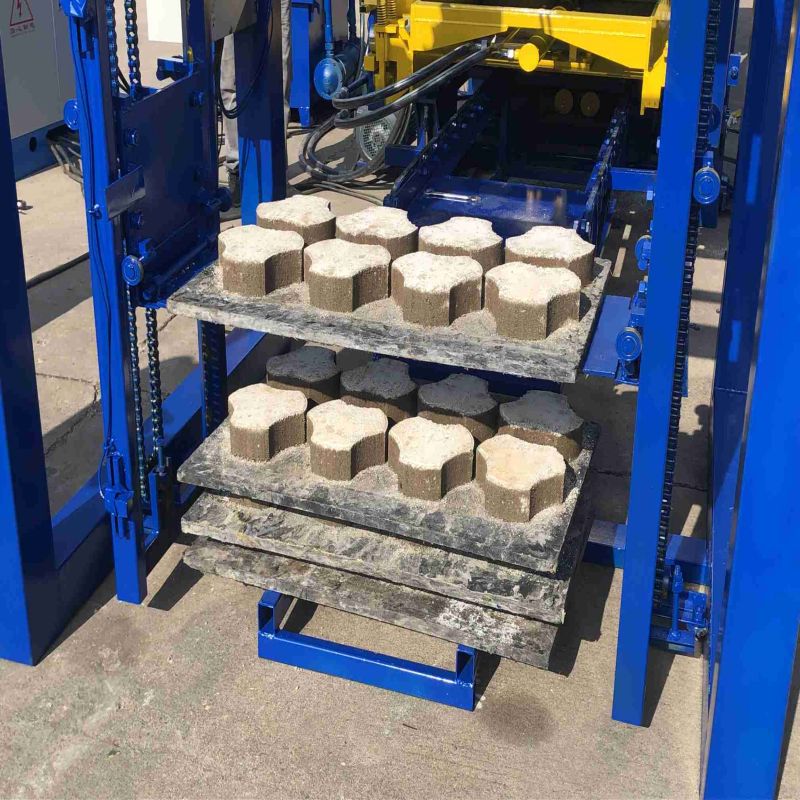
Image source:Aiwei block machine
Introduction
Sustainability has become a guiding principle in today’s construction industry, with a growing emphasis on reducing environmental impact and promoting eco-friendly practices. Brick production, a cornerstone of construction, is no exception. Sustainable brick production combines innovative technologies, resource efficiency, and responsible practices to create building materials that align with environmental preservation. This article delves into the concept of sustainable brick production, highlighting the green practices adopted and the wide-ranging environmental benefits it offers.
1. The Environmental Impact of Traditional Brick Production
Traditional brick production methods, involving resource-intensive processes, have long been associated with environmental concerns.
- Resource Depletion: Traditional brick-making relies heavily on clay extraction, depleting natural resources.
- Energy Intensity: Conventional brick firing in traditional kilns requires substantial energy consumption and contributes to carbon emissions.
- Air Pollution: Firing processes release pollutants such as particulate matter and greenhouse gases, affecting air quality.
2. Sustainable Brick Production: A Paradigm Shift
Sustainable brick production aims to mitigate these environmental issues through a combination of innovative techniques and responsible practices.
- Resource Conservation: Sustainable practices focus on minimizing resource consumption through efficient material usage and recycling.
- Energy Efficiency: Technologies like energy-efficient kilns and alternative firing methods reduce energy consumption.
- Waste Reduction: Waste management strategies minimize the generation of waste and promote recycling.
3. Incorporating Recycled Materials
A key aspect of sustainable brick production is the integration of recycled materials, reducing the demand for virgin resources.
- Fly Ash Bricks: Fly ash, an industrial waste product, can be used as a substitute for clay, reducing the need for traditional raw materials.
- Recycled Aggregates: Incorporating recycled aggregates into brick production minimizes the extraction of natural aggregates.
4. Energy-Efficient Firing Technologies
Innovative firing technologies play a crucial role in sustainable brick production.
- High-Efficiency Kilns: Modern kilns optimize heat distribution and retention, reducing energy consumption.
- Biomass Firing: Biomass firing methods utilize organic waste as fuel, significantly decreasing carbon emissions.
5. Reduced Carbon Footprint
Sustainable brick production directly contributes to a reduced carbon footprint in the construction industry.
- Lower Emissions: Energy-efficient kilns and alternative firing methods result in fewer greenhouse gas emissions.
- Climate Mitigation: Sustainable brick production aligns with global efforts to mitigate climate change by lowering overall carbon emissions.
6. Air Quality Improvement
The adoption of sustainable practices positively impacts air quality in and around brick production facilities.
- Emission Reduction: Modern technologies minimize the release of pollutants, improving local air quality.
- Particulate Control: Advanced filtration systems reduce the release of particulate matter during firing.
7. Water Conservation and Management
Sustainable brick production extends to responsible water usage and management practices.
- Efficient Water Use: Water-efficient techniques in mixing and molding reduce water consumption.
- Water Recycling: Implementing water recycling systems minimizes the strain on local water resources.
8. Enhanced Durability and Longevity
Sustainable bricks often possess enhanced durability, contributing to the longevity of structures.
- High-Quality Materials: Sustainable production methods result in bricks with consistent quality, reducing the need for frequent replacements.
- Structural Integrity: Durable bricks lead to longer-lasting buildings, minimizing the environmental impact of future construction.
9. Conservation of Ecosystems and Biodiversity
Sustainable brick production has broader implications for conserving ecosystems and biodiversity.
- Reduced Habitat Disruption: Responsible resource extraction minimizes disruption to local ecosystems and habitats.
- Preserving Landscapes: Sustainable practices help preserve landscapes from degradation and deforestation.
10. Future Prospects and Challenges
As the construction industry embraces sustainability, the future of brick production holds promise.
- Innovation and Research: Ongoing research will continue to yield innovative technologies and practices.
- Awareness and Implementation: Encouraging widespread adoption of sustainable practices remains a challenge.
Conclusion
Sustainable brick production represents a paradigm shift in the construction industry, reflecting a commitment to environmental responsibility. Through resource conservation, energy efficiency, and the integration of recycled materials, sustainable practices in brick production lead to reduced carbon emissions, improved air and water quality, and enhanced durability. As the construction sector moves towards a greener future, sustainable brick production stands as a beacon of progress, fostering a harmonious balance between human development and environmental preservation.
